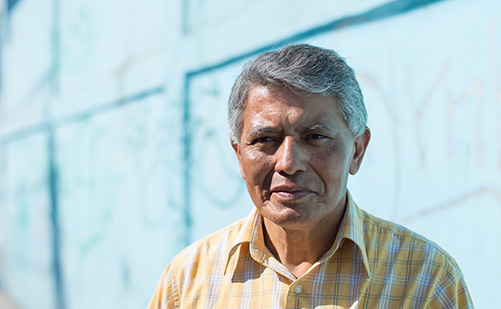
About diabetes
Education is crucial to the successful management of both type 1 and type 2 diabetes. Learn more about each type of diabetes and how they can be treated.
If you are living with type 1 diabetes, it is important to monitor how much alcohol you’re drinking in order to stay healthy and avoid risks such as low blood sugar levels leading to a hypo (hypoglycaemia)1,2.
Absolutely. Living with type 1 diabetes, you can drink alcohol (and enjoy it!) as long as you do so in moderation. That said, there is still a risk associated with type 1 diabetes and alcohol consumption, so it’s important to keep this in mind and follow some simple tips to avoid any negative side effects1.
The recommendations for safe drinking are the same for both people living with type 1 diabetes and people without. If you regularly consume a moderate amount of alcohol, then you should spread the number of units you consume across at least 3 days throughout the week to avoid binge drinking or excess consumption, and you should have several alcohol-free days3,4.
The difference for people managing type 1 diabetes is that alcohol can make your blood sugar levels drop too low, leading to a hypo while you’re drinking or the day after. Some alcohol and mixers such as soft drinks can also have high sugar levels, or directly impact how some of your medications work3.
Can type 1 diabetes and alcohol go together? Drinking alcohol when you have type 1 diabetes doesn’t need to be scary or dangerous as long as you’re careful, aware of a few key tips and always drink in moderation1. Here are some things to consider before you have that first drink:
Before
Eat carbohydrates (e.g., pasta) and don’t drink on an empty stomach1
Let your friends know a few key signs so they can recognise a hypo if they need to (e.g., sweating or being anxious/irritable)2
During
Make sure you have your diabetes ID wristband or card1
Choose diet soft drink mixers1
Pace yourself, e.g., by alternating between alcoholic drinks and water6
Regularly measure your blood sugar levels1
After
Be aware of the similarities between a hypo and a hangover1
Drink lots of water1
The main risk associated with type 1 diabetes and alcohol consumption is hypoglycaemia (a hypo), where your blood sugar levels become too low2. Hypos can take place when you’re drinking or up to 24 hours after alcohol consumption1.
Check out this article to learn more about hypos; how you can spot and manage them.
There are a lot of similarities between hypos, being drunk and experiencing a hangover1. For example, when someone with type 1 diabetes experiences a hypo, they may feel particularly anxious, have blurred sight, sweating or experience difficulty concentrating.2
Top tip: to remove any doubt around whether you’re drunk or having a hypo, make sure to regularly check your blood sugar. Eat something if your blood sugar is normal or low, particularly if you’re active1.
Regardless of whether you have type 1 diabetes or not, drinking alcohol impacts your blood sugar levels. When you’ve eaten and your body is in a fed state, alcohol consumption raises blood sugar levels, whereas when you haven’t eaten for some time and your body is in a fasting state, alcohol consumption will lower your blood sugar levels9.
With type 1 diabetes, your body will struggle to control your blood sugar levels, which is why insulin therapy is an important regulator of blood sugar levels. Drinking alcohol when taking insulin medications heightens this risk even more, reducing your body’s ability to control and recover from low blood sugar levels9.
You can still drink alcohol if you have type 1 diabetes. However, it is important to drink in moderation and be aware of the effects of alcohol on your blood sugar. If you are concerned about how and when to drink alcohol safely, please reach out to a healthcare professional for advice1.
HQ22DI00211
